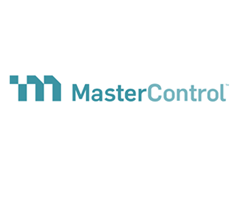5 must-haves for electronic batch records (EBRs) in life sciences
Paper-based processes create inefficiencies, increase compliance risk and can cost thousands of dollars per error
Add bookmark
If you’re still relying on paper batch records, you’re not just buried in binders, you may also be holding back your entire operation. Paper-based processes create inefficiencies, increase compliance risk and can cost thousands of dollars per error. In fact, some life sciences companies report documentation mistakes costing as much as $100,000 per incident.
That’s where electronic batch records (EBRs) come in. Unlike “paper-on-glass” approaches that simply digitize documents, modern EBRs give you a powerful, connected platform that drives efficiency, quality and compliance.
Here are the five essential features your EBR solution must deliver.
Join the PEX Network community

Don't miss any news, updates or insider tips from PEX Network by getting them delivered to your inbox. Sign up to our newsletter and join our community of experts.
Learn More1. Optimized workflows
Paper and hybrid processes slow everything down. Some manufacturers wrestle with 500-page batch records and 3,000 manual entries per run. EBRs automate data capture, connect SOPs and training in real time and reduce errors so your teams can work faster and smarter.
2. Connected systems
Your EBR shouldn’t live in a silo. The best solutions integrate seamlessly with ERP, MES, LIMS and QMS systems, making it easier to launch batch records, track inventory and maintain compliance without duplicate work. Connected systems create real-time visibility across your enterprise.
3. Complete, usable data
With paper, missing or unusable data is common; 64 percent of life sciences professionals report this problem. A strong EBR captures accurate data at every step, enabling advanced analytics and ensuring integrity before issues escalate. Complete data means better business intelligence and faster decisions.
4. Faster reviews and releases
Batch reviews don’t have to take weeks. With EBRs, quality and manufacturing can collaborate in real time, reducing errors and rework. In fact, one cell therapy developer cut review and closure times by 50 percent, a critical advantage when patients are waiting for life-saving treatments.
5. End-to-end traceability
From raw materials to finished goods, traceability is essential for compliance and audit readiness. The right EBR gives you a real-time, searchable record of suppliers, changes, deviations and risks, making it easier to respond quickly and maintain consistent processes across global sites.
Electronic batch records: Why it matters
Together, these five must-haves turn EBRs into more than just digital paperwork. They’re the foundation of a modern manufacturing strategy that reduces costs, ensures compliance and accelerates your path to market.
If your organization is ready to move beyond paper, now is the time to explore how a connected, intelligent EBR solution can transform your operations.





